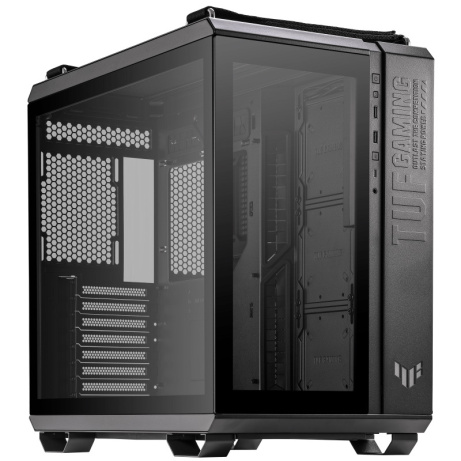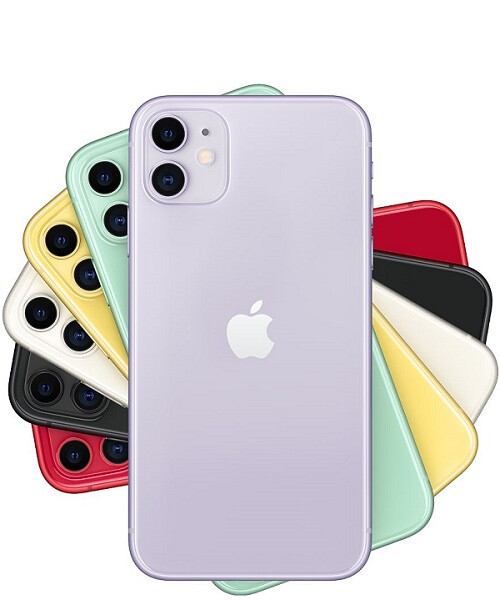 BOHEMIAPC počítačeNačítám kategorie
BOHEMIAPC počítačeNačítám kategoriePC, notebooky, tablety
Načítám kategorie GSM telefonyNačítám kategorie
GSM telefonyNačítám kategorie Herní zónaNačítám kategorie
Herní zónaNačítám kategorie E-mobilitaNačítám kategorie
E-mobilitaNačítám kategorie- Konfigurátor sestav
Aktuální akční letáky
Lenovo ThinkSystem Intel I350-T4 PCIe 1Gb 4-Port RJ45 Ethernet Adapter
Výrobce:Lenovo
Kód produktu:i26_988173
Part number:7ZT7A00535
EAN:0889488433780
Záruka:12 měsíců
Dostupnost:
na dotaz
ZBOŽÍ NENÍ AKTUÁLNĚ SKLADEM. O SKLADOVÉ DOSTUPNOSTI SE INFORMUJTE NA EMAILU, NEBO SI NASTAVTE NÍŽE " SLEDOVAT CENU "
Popis
Parametry produktu
Adapter features:
Connectors:
I350-T4 adapters: Four 10/100/1000 copper ports with RJ45 connectors
I350-T2 adapter: Two 10/100/1000 copper ports with RJ45 connectors
I350-F1 adapter: One fiber optic LC connector supporting MMF 62.5/50 µm cables, conforming to IEEE 802.3Z 1000BASE-SX. (Note: The LC connector is fixed and cannot be removed).
Based on Intel I350 ASIC
Line rate with IEEE 802.3 auto negotiation for 1000/100/10 Base-T Ethernet (T4 ML2, T2, and T4 adapters only)
Host interface: PCIe 2.0 x4 host interface
Form factor:
I350-T4 ML2 adapter: Mezzanine LOM Generation 2 (ML2) form factor
I350-T4 OCP adapter: OCP 3.0 SFF form factor
Other I350 adapters: Standard PCI-e low profile card form factor
Power dissipation:
I350-T4 ML2 adapter: 12.5 W typical
I350-F1 adapter: 5.1 W typical
I350-T2 adapter: 4.6 W typical
I350-T4 adapter: 5.9 W typical
Performance features:
TCP/UDP, IPv4 checksum offloads, and extended Tx descriptors
IPv6 support for IP/TCP and IP/UDP receive checksum offloads
Tx TCP segmentation offload (IPv4 and IPv6)
Transmit segmentation offload
Interrupt throttling control
Message Signal Interrupt (MSI) support
Message Signal Interrupt Extension (MSI-X) support
Intelligent interrupt generation
RSS for Windows
Scalable I/O for Linux
Low-latency interrupts
Header/Packet Data Split in Receive
PCIe v2.1 TLP processing hint requester
Descriptor ring management hardware for transmit and receive
Ethernet and power features:
IEEE 802.3, 802.3u, and 802.3ab (Base-T adapters only)
Jumbo frame support (9500 bytes)
IEEE 1588 and 802.1AS
MDI/MDIX auto crossover detection
IEEE 802.3x compliant flow control
IEEE 802.3z (I350-F1 adapter only)
Flow control (IEEE 802.3)
VLAN support (IEEE 802.1q)
Priority of service (IEEE 802.1p)
PXE Preboot eXecution
iSCSI support for native OS and VMM iSCSI software initiators
Wake on LAN support (Base-T adapters only)
IEEE 802.3az Energy Efficient Ethernet
DMA coalescing
Virtualization features:
SRIOV support
Intel Virtual Technology (VT) with I/OAT and VMDq
Eight TX and Rx Queue pairs per port
Flexible Port Partitioning - 8 virtual functions (VFs) per port
RX/TX Round-Robin Scheduling
Traffic isolation
Traffic steering
VM to VM packet forwarding
MAC and VLAN anti-spoofing
Malicious driver detection
Storm control
Per-pool statistics, off loads, and jumbo support
IEEE 802.1q VLAN support with VLAN tag insertion for up to 4096 VLANs
Mirroring rules
VEPA (VM switching)
Intel I/O Acceleration Technology (Intel I/OAT) is a suite of features that improves data acceleration across the platform, from networking devices to the chipset and processors, which helps to improve system performance and application response times. The suite of features includes the following items:
Intel QuickData Technology: Provides the Direct Memory Access (DMA) engine, which moves data by using the chipset instead of the processor.
MSI-X: Minimizes the impact of I/O interrupts by load-balancing interrupts across multiple processor cores.
Low-Latency Interrupts: Allows the adapter to bypass the automatic moderation of time intervals between the interrupts (based on the sensitivity of the incoming data).
Receive Side Scaling (RSS): Directs the interrupts to a specific processor core based on the application’s address.
Virtual Machine Device Queues (VMDq) reduce the I/O impact on the Hypervisor in a virtualized server by performing data sorting and coalescing in the network silicon. VMDq technology uses multiple queues in the network controller. As data packets enter the network adapter, they are sorted, and packets traveling to the same destination (or virtual machine) are grouped in a single queue. The packets are then sent to the Hypervisor, which directs them to their respective virtual machines. Relieving the Hypervisor of packet filtering and sorting improves overall processor usage and throughput levels.
Single Root I/O Virtualization (SR-IOV) is a method where the adapter and its resources are virtualized so that virtual machine guest can separately configure and access the virtualized resources without impacting the use of the same resources by other virtual machines.
Connectors:
I350-T4 adapters: Four 10/100/1000 copper ports with RJ45 connectors
I350-T2 adapter: Two 10/100/1000 copper ports with RJ45 connectors
I350-F1 adapter: One fiber optic LC connector supporting MMF 62.5/50 µm cables, conforming to IEEE 802.3Z 1000BASE-SX. (Note: The LC connector is fixed and cannot be removed).
Based on Intel I350 ASIC
Line rate with IEEE 802.3 auto negotiation for 1000/100/10 Base-T Ethernet (T4 ML2, T2, and T4 adapters only)
Host interface: PCIe 2.0 x4 host interface
Form factor:
I350-T4 ML2 adapter: Mezzanine LOM Generation 2 (ML2) form factor
I350-T4 OCP adapter: OCP 3.0 SFF form factor
Other I350 adapters: Standard PCI-e low profile card form factor
Power dissipation:
I350-T4 ML2 adapter: 12.5 W typical
I350-F1 adapter: 5.1 W typical
I350-T2 adapter: 4.6 W typical
I350-T4 adapter: 5.9 W typical
Performance features:
TCP/UDP, IPv4 checksum offloads, and extended Tx descriptors
IPv6 support for IP/TCP and IP/UDP receive checksum offloads
Tx TCP segmentation offload (IPv4 and IPv6)
Transmit segmentation offload
Interrupt throttling control
Message Signal Interrupt (MSI) support
Message Signal Interrupt Extension (MSI-X) support
Intelligent interrupt generation
RSS for Windows
Scalable I/O for Linux
Low-latency interrupts
Header/Packet Data Split in Receive
PCIe v2.1 TLP processing hint requester
Descriptor ring management hardware for transmit and receive
Ethernet and power features:
IEEE 802.3, 802.3u, and 802.3ab (Base-T adapters only)
Jumbo frame support (9500 bytes)
IEEE 1588 and 802.1AS
MDI/MDIX auto crossover detection
IEEE 802.3x compliant flow control
IEEE 802.3z (I350-F1 adapter only)
Flow control (IEEE 802.3)
VLAN support (IEEE 802.1q)
Priority of service (IEEE 802.1p)
PXE Preboot eXecution
iSCSI support for native OS and VMM iSCSI software initiators
Wake on LAN support (Base-T adapters only)
IEEE 802.3az Energy Efficient Ethernet
DMA coalescing
Virtualization features:
SRIOV support
Intel Virtual Technology (VT) with I/OAT and VMDq
Eight TX and Rx Queue pairs per port
Flexible Port Partitioning - 8 virtual functions (VFs) per port
RX/TX Round-Robin Scheduling
Traffic isolation
Traffic steering
VM to VM packet forwarding
MAC and VLAN anti-spoofing
Malicious driver detection
Storm control
Per-pool statistics, off loads, and jumbo support
IEEE 802.1q VLAN support with VLAN tag insertion for up to 4096 VLANs
Mirroring rules
VEPA (VM switching)
Intel I/O Acceleration Technology (Intel I/OAT) is a suite of features that improves data acceleration across the platform, from networking devices to the chipset and processors, which helps to improve system performance and application response times. The suite of features includes the following items:
Intel QuickData Technology: Provides the Direct Memory Access (DMA) engine, which moves data by using the chipset instead of the processor.
MSI-X: Minimizes the impact of I/O interrupts by load-balancing interrupts across multiple processor cores.
Low-Latency Interrupts: Allows the adapter to bypass the automatic moderation of time intervals between the interrupts (based on the sensitivity of the incoming data).
Receive Side Scaling (RSS): Directs the interrupts to a specific processor core based on the application’s address.
Virtual Machine Device Queues (VMDq) reduce the I/O impact on the Hypervisor in a virtualized server by performing data sorting and coalescing in the network silicon. VMDq technology uses multiple queues in the network controller. As data packets enter the network adapter, they are sorted, and packets traveling to the same destination (or virtual machine) are grouped in a single queue. The packets are then sent to the Hypervisor, which directs them to their respective virtual machines. Relieving the Hypervisor of packet filtering and sorting improves overall processor usage and throughput levels.
Single Root I/O Virtualization (SR-IOV) is a method where the adapter and its resources are virtualized so that virtual machine guest can separately configure and access the virtualized resources without impacting the use of the same resources by other virtual machines.
GPSR:Lenovo (Slovakia);Landererova 12,811 09,Bratislava,Slovakia;compliance@lenovo.com

